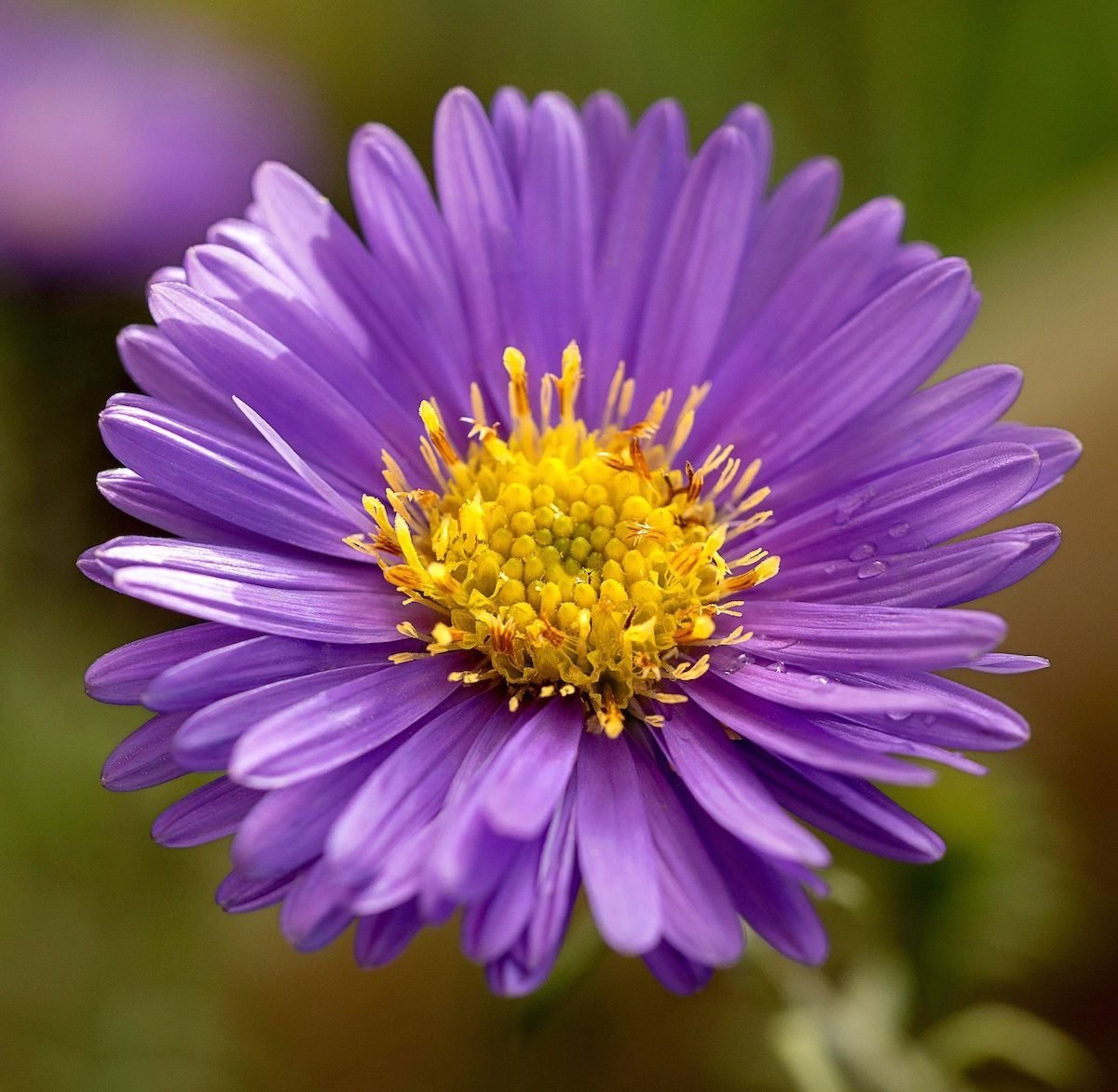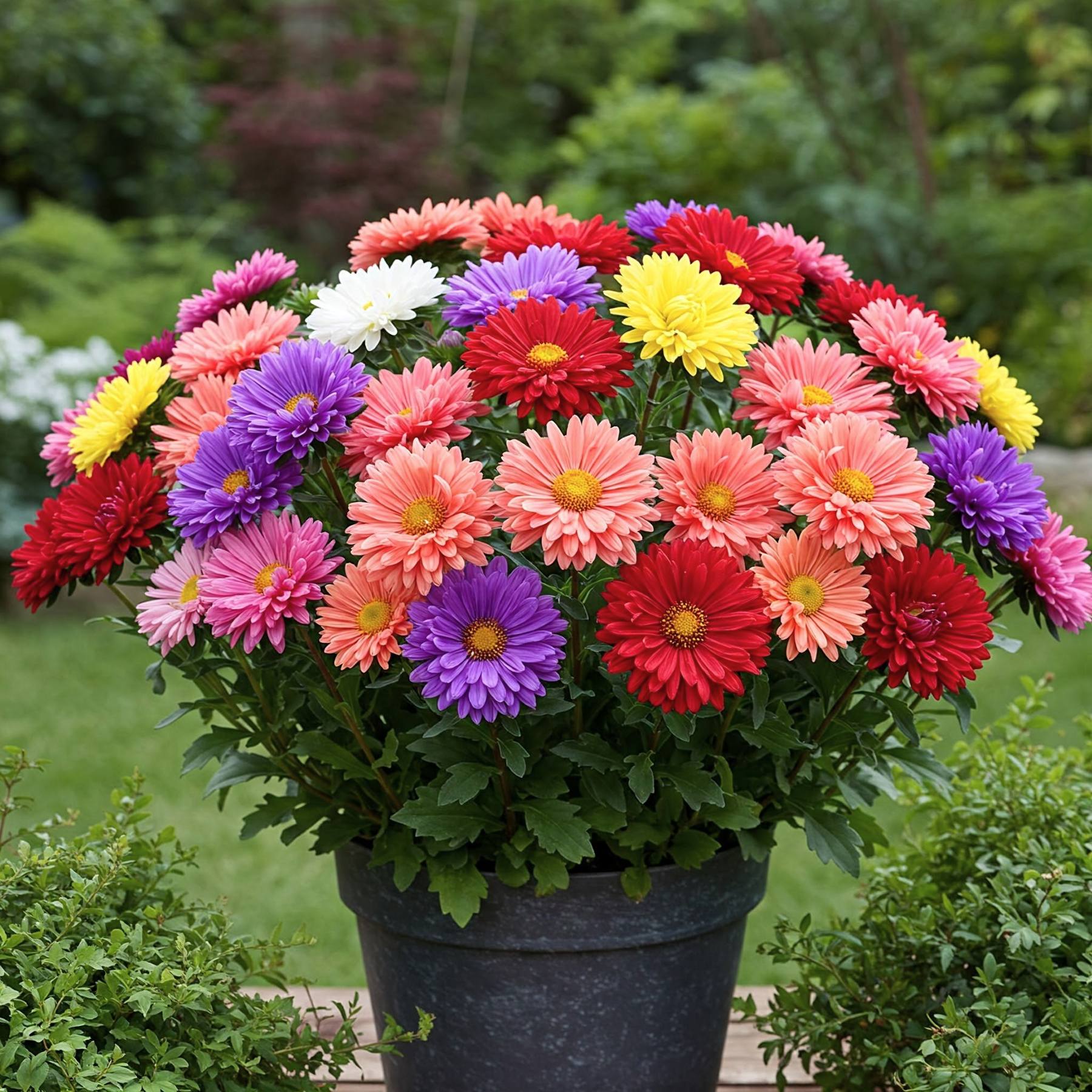
Aster flowers are a favorite among gardeners. They bring bright colors and charm to any garden. These flowers bloom in late summer and fall. They add life when many other flowers are gone. Their star-shaped petals look lovely and inviting.

Credit: www.birdsandblooms.com
What Are Aster Flowers?
Asters are a group of flowering plants. They belong to the daisy family. Their petals look like little stars. This is why they got the name “Aster.” Asters come in many colors like purple, pink, white, and blue. They grow well in many places around the world.
People love asters because they bloom for a long time. They bloom from late summer to the first frost. This means they brighten gardens when most flowers have stopped.
Why Grow Aster Flowers?
- Long Bloom Time: Asters bloom when few flowers do.
- Attract Pollinators: Bees and butterflies love asters.
- Easy to Grow: They need little care once planted.
- Variety of Colors: You can find many colors to choose from.
- Great for Borders: They look lovely along garden edges.
Types of Aster Flowers
There are many kinds of asters. Here are some popular types:
| Type | Color | Height | Bloom Time |
|---|---|---|---|
| New England Aster | Purple, Pink | 3 to 6 feet | Late Summer to Fall |
| New York Aster | Pink, Purple, White | 1 to 3 feet | Late Summer to Fall |
| Michaelmas Daisy | Blue, Purple | 2 to 4 feet | Fall |
| China Aster | Various Colors | 1 to 3 feet | Summer to Fall |
How to Plant Asters
Planting asters is simple. Follow these easy steps to grow healthy flowers:
1. Choose The Right Location
Asters like full sun. This means at least 6 hours of sunlight every day. They can also grow in partial shade. But too much shade may reduce flowers.
2. Prepare The Soil
Asters grow best in well-drained soil. The soil should be loose and not too heavy. You can add compost to improve soil quality. Compost helps soil hold water and nutrients.
3. Planting Seeds Or Seedlings
You can plant asters from seeds or young plants. If using seeds, start them indoors 6 to 8 weeks before the last frost. Plant seeds about 1/8 inch deep in seed trays.
When seedlings are strong, move them outside after frost danger passes. If planting young plants, dig holes big enough for roots. Space plants about 1 to 3 feet apart depending on type.
4. Watering
After planting, water asters well. Keep soil moist but not soggy. Water regularly during dry periods. Avoid wetting the leaves to prevent disease.
5. Mulching
Adding mulch around asters helps keep soil moist. Mulch also stops weeds from growing near plants. Use straw, bark, or leaves as mulch.
6. Fertilizing
Feed asters with a balanced fertilizer in spring. This gives them energy to grow strong. Avoid too much fertilizer as it can cause weak stems.
7. Support Tall Plants
Some asters grow tall and may need support. Use stakes or plant supports to keep them upright. This helps prevent bending or breaking.
8. Deadheading
Remove old flowers to encourage new blooms. This is called deadheading. Pinch off faded flowers with your fingers or scissors.
9. Overwintering Asters
In cold climates, asters die back in winter. Cut plants to about 2 inches above ground after frost. Mulch around plants to protect roots from cold.
Common Problems with Asters
Even though asters are easy to grow, they can face some problems.
- Powdery Mildew: White powder on leaves. Keep plants well spaced for air flow.
- Aphids: Small bugs that suck plant juices. Spray water or insect soap to remove.
- Root Rot: Caused by too much water. Make sure soil drains well.
How to Use Aster Flowers in Your Garden
Asters are very flexible. You can use them in many ways:
- Flower Beds: Plant asters with other fall flowers for color.
- Borders: Use asters to edge paths or fences.
- Cut Flowers: Asters make beautiful bouquets.
- Wildlife Gardens: Attract bees, butterflies, and birds.

Credit: www.easytogrowbulbs.com
Fun Facts About Aster Flowers
- Asters are symbols of love and patience.
- The name “Aster” means “star” in Greek.
- In some cultures, asters represent wisdom.
- Asters can live in the wild and gardens.
Frequently Asked Questions
What Are Aster Flowers Known For?
Asters are known for their bright, daisy-like blooms and vibrant colors.
How Do I Plant Asters In My Garden?
Plant asters in well-drained soil with full sun for best growth.
When Is The Best Time To Plant Asters?
Spring or early fall is ideal for planting asters outdoors.
How Often Should I Water Aster Flowers?
Water asters regularly, keeping soil moist but not soggy.
Conclusion
Aster flowers are a wonderful choice for any garden. They bring color late in the season. They are easy to plant and care for. Their beauty lasts long and attracts helpful insects. Whether you have a small or big garden, asters fit well.
Try planting asters this year. Enjoy their bright petals and lovely scent. Watch your garden come alive with asters!





Leave a Reply